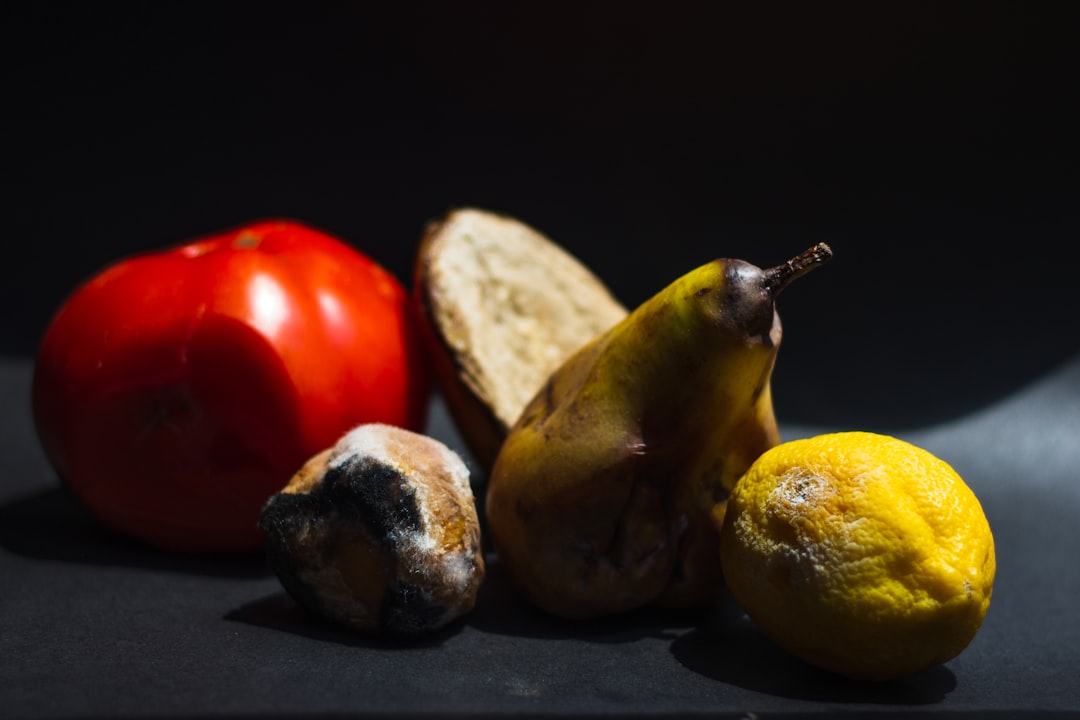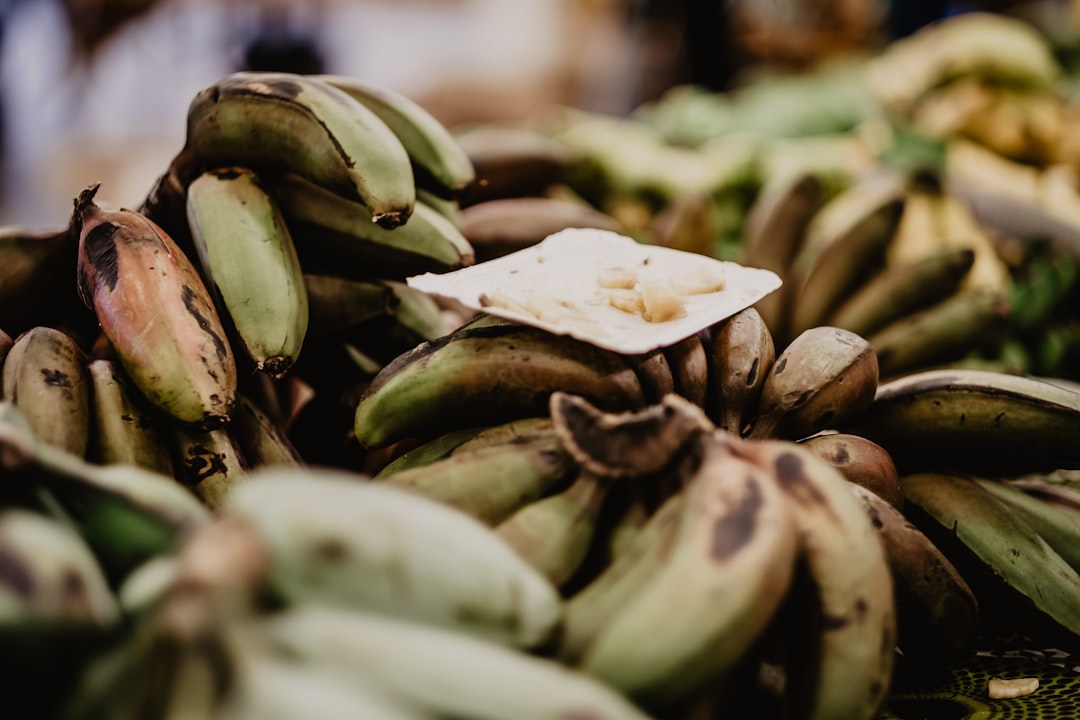Extreme Cuisine: Braving the World’s Toughest Dining Scenes
Extreme Cuisine: Braving the World's Toughest Dining Scenes - Bugs on the Menu
For most people, the thought of chomping down on crunchy insects is enough to make their skin crawl. But for over 2 billion people worldwide, entomophagy (aka bug-eating) is just another normal part of life. From grasshoppers and ants to beetles and caterpillars, insects are a common ingredient in cuisines across Asia, Africa, and Latin America. And as concerns grow over sustainability and environmental impact, more and more Westerners are opening up to the idea of bugs as a food source too.
So why eat bugs? For one thing, raising insects requires far less land, water and feed than traditional livestock. Crickets, for example, provide the same amount of protein as beef but require 12 times less feed. Bugs also pack a strong nutritional punch, with high levels of protein, vitamins, and minerals. And while the taste and texture may seem foreign at first, most bugs take on the flavor of whatever they’re cooked with.
My first foray into entomophagy came during a trip to Thailand. At a roadside market, I nervously purchased a bag of whole deep-fried crickets. After working up the courage to pop one in my mouth, I found it surprisingly...not bad! It had a satisfying crunch followed by a nutty, toasted flavor. From there I moved on to sampling crispy fried silkworms and larvae – both with a similar satisfying crunch and mild taste.
Other travelers have had more intense bug-eating experiences. One blogger described sampling live weaver ants in Cambodia, which taste like a lemony exploded. She chased them down with crispy tarantulas in pepper sauce, comparing their flavor to soft-shell crab. Meanwhile, another traveler tucked into a plate of sizzling hornet larvae street food in Japan, noting their sticky, meaty texture like chicken gizzards.
What else is in this post?
- Extreme Cuisine: Braving the World's Toughest Dining Scenes - Bugs on the Menu
- Extreme Cuisine: Braving the World's Toughest Dining Scenes - Snakes and Frogs and Lizards, Oh My!
- Extreme Cuisine: Braving the World's Toughest Dining Scenes - When Rotten is Right
- Extreme Cuisine: Braving the World's Toughest Dining Scenes - Extremely Hot and Spicy Dishes
- Extreme Cuisine: Braving the World's Toughest Dining Scenes - Poisonous Pufferfish and Deadly Blowfish
- Extreme Cuisine: Braving the World's Toughest Dining Scenes - Witchetty Grubs and Mopane Worms
- Extreme Cuisine: Braving the World's Toughest Dining Scenes - A Drink from the Spit Bucket
- Extreme Cuisine: Braving the World's Toughest Dining Scenes - Down the Hatch!
Extreme Cuisine: Braving the World's Toughest Dining Scenes - Snakes and Frogs and Lizards, Oh My!

For the more daring traveler, going beyond cricket fritters and ant omelets means sampling some of the world's more dangerous critters. We're talking snakes, frogs, and lizards that can kill you - prepared in just the right way so they only thrill instead of kill.
In Vietnam, one of the local delicacies is cobra heart fried up with lemongrass and chili peppers. After the deadly snake is killed, its still-beating heart is quickly sliced out and thrown into a hot wok. One travel blogger who tried it describes the experience: "Taking a bite feels risky, even though the venom has been removed. The heart is chewy with a surprisingly mild flavor, absorbing the spices it's fried with." Snake blood and bile wine are also popular ways to sample serpent in Vietnam.
Meanwhile, frog legs remain a French culinary tradition. Most often the back legs of bullfrogs are the prime cut. Travelers describe them as tasting like a cross between chicken and fish, with an extremely delicate texture. From roadside food trucks to upscale Parisian bistros, frog legs fried in garlic butter are classic French fare. For the more offbeat experience, head to specialty frog markets in cities like Lyon where you can purchase live frogs to cook yourself later.
Down in Indonesia, Komodo dragons - the world's largest lizards - are also sometimes eaten. But hunting the endangered dragons has been outlawed since the 1980s. Instead, travelers can find dragon meat served clandestinely at some restaurants on the island of Komodo itself. According to one daring diner, the reptile tastes like a "gamy, tough" chicken. Lizards of all sorts are eaten throughout Southeast Asia, usually chopped up and curried or fried.
Extreme Cuisine: Braving the World's Toughest Dining Scenes - When Rotten is Right

When it comes to food, fresh and just-picked is usually best. But for some of the world's most adventurous eaters, aged, rotten, and downright putrid ingredients are where the real flavor is at. We're talking about foods so pungent they make your eyes water from across the room.
In Iceland, fare like hákarl – fermented shark meat – is a local specialty. Greenland shark is poisonous when fresh, so it must rot for 6-12 weeks to break down the toxins. Most describe the stench emanating from hákarl as eye-wateringly strong, like a punched-in-the-face aroma of ammonia. But beyond the overpowering funk lies a firm, fishy flesh with a tangy, acidic bite. After plugging their nose, many find hákarl surprisingly tasty. Just chase it with some Brennivín, a potent Icelandic schnapps.
Then there's kiviak, sometimes referred to as Greenland's most bizarre delicacy. To make it, 300-500 whole auk seabirds are stuffed into a seal skin, which is then sewn up and buried underground to ferment for 3-18 months. When dug up, the birds have been pickled by their own juices anddecomposition. The raw flesh and organs are eaten straight from the carcass.
Those who have tried kiviak note an initial scent like a musty cellar filled with dirty socks and rotting meat. But the taste is surprisingly mellow, like a ripe, pungent cheese with oily nutty notes. All that funk takes some getting used to. But kiviak remains an important part of Greenlandic winter traditions and preparing it is a time for the community to come together.
In tropical Southeast Asia, foods like phá lấu undergo controlled rotting processes too. Slices of raw beef are left to mature in jars, developing a deeply funky flavor and potent smell that some liken to blue cheese crossed with fish sauce. Locals spread phá lấu on crackers or mix it into noodle dishes for a savory umami kick. While the scent may be nostril-flaring, the complex tastes are fantastic.
Extreme Cuisine: Braving the World's Toughest Dining Scenes - Extremely Hot and Spicy Dishes

For chili heads and spice fiends, no dining experience is complete without tongue-searing, sweat-inducing heat. These bold diners seek out the world’s most painfully fiery foods on their global travels – edible challenges that separate the pros from the wannabes. We’re talking about dishes so scorching they make your average extra-hot Buffalo wings seem as mild as apple sauce.
Many such spicy specialities hail from India, home to curries that score over one million on the Scoville scale. The ghost pepper, one of the hottest chili peppers around, is an essential ingredient in dishes like Phall from Birmingham, England. Phall features a thick, tomato-based curry loaded with ghost peppers and pureed green chilies. “Eating Phall was like putting a blowtorch in my mouth,” describes one British blogger, who needed four pints of milk to recover from the searing heat.
Meanwhile, the Sichuan Province of China is famous for málà, its signature tongue-numbing peppercorn spice. Hot pots loaded with málà chili oil, like the specialty Tiger Bites Rabbit, push diners to their limit. “After two bites, my head was dripping with sweat,” writes a traveler who took on the Tiger Bites Rabbit challenge. “The intense málà spice made my mouth tingle and go numb.” Only the most hardened spice-seekers can finish a whole pot solo.
Even Korea has joined the scorching cuisine scene with its infamous fire chicken. In this sadistic dish, a whole chicken is fried up in a batter loaded with hot pepper. Some restaurants offer five spice levels – though only level five will satisfy true heat-seekers. “I took one bite and flames erupted in my mouth,” describes a Canadian traveler who dared to try the nuclear level five fire chicken in Seoul. “My entire face instantly started tingling and I could barely catch my breath.”
Nowhere is fiery food more famous than in Thailand though. There, jungle curry, volcanic tom yum soup, and papaya salad loaded with endless chilies leave mouths aflame. Those who manage to finish a plate of "Hellfire Noodles" at Soi 38 in Bangkok earn serious bragging rights. Made with extra-spicy Thai chilies, one blogger called them "by far the most painfully hot thing I've ever consumed...I was still sweating and breathing fire the next day."
Extreme Cuisine: Braving the World's Toughest Dining Scenes - Poisonous Pufferfish and Deadly Blowfish

Among the ocean's deadliest delicacies are the notorious fugu, or pufferfish. Though mostly harmless when untouched, certain organs of the fugu contain tetrodotoxin, an extraordinarily venomous neurotoxin. Just a small dose - we're talking the amount that fits on the head of a pin - can be fatal to humans. Yet despite the extreme risk, this lethal pufferfish remains a traditional dish in Japan, prepared by specially licensed fugu chefs. For thrill-seekers, taking down a platter of perfectly sliced fugu sashimi represents the ultimate brash challenge.
During my time living in Tokyo, I was able to attend a fugu tasting at a restaurant owned by a master itamae fugu chef. As I entered, the chef presented a large, inflated fugu fish on display - a subtle warning of the power encased within its bloated belly. I watched nervously as he used his razor-sharp sashimi knives to slice tissue-thin cuts of the translucent flesh. Decoratively plated with ponzu sauce and mounds of grated fresh daikon, the fugu sashimi emitted a soft white glow under the lights, almost seeming to vibrate.
Despite its elegant appearance, I couldn't help but feel a morbid curiosity as I lifted the first trembling slice to my lips. The flavor was light and clean, with a delicate texture not unlike flounder or sea bass. The accompanying ponzu added a bright spark of citrus, balanced by the fresh snap of grated radish. Nowhere did I detect even the slightest tingle or numbing heat on my tongue - the sure sign a lethal dose of tetrodotoxin was present. The chef had done his job well, preparing fugu with all toxic parts removed. In the end, the thrill came not from the taste but the risk inherent in this controlled dance with death.
Those less fortunate have discovered the true fearsome power of tetrodotoxin. Food historian Hans Lienesch describes witnessing a man inhale just a tiny puff of fugu ovaries, which contain lethal levels of the toxin. Within minutes, the man collapsed to the floor, his body fully paralyzed while his mind remained trapped inside, unable to move. Left untreated, the toxin slowly paralyzes the respiratory system until the victim suffocates, completely aware until the last moment. There is no antidote.
Despite nearly 100 documented cases of fugu poisoning each year, Japan has refused to ban it outright due to its cultural significance. But fugu's deadly dangers have earned it notoriety worldwide. Celebrity chef Anthony Bourdain famously tried fugu on an episode of "No Reservations" in 2007, describing it as "playing Russian Roulette with chopsticks." The travel host Zimmern sampled it as well on his show "Bizarre Foods," calling fugu "the poisonous blowfish that can kill you."
Extreme Cuisine: Braving the World's Toughest Dining Scenes - Witchetty Grubs and Mopane Worms

For the boldest eaters, a trip down under to Australia or southern Africa serves up some of the world’s wiggliest, wigglier "delights" - we're talking lip-smacking maggoty witchetty grubs and juicy mopane worms. While the thought may get your skin crawling, the locals can’t get enough of these crispy, crunchy, protein powerhouses. If you can get past the initial fear factor, you’ll unlock some of the most nutritious grub Mother Nature has to offer. That’s right, larvae lovers: it’s time to get your slurp on.
In the Australian Outback, Aboriginal tribes have feasted on witchetty grubs for ages. These oversized, squirmy larvae grow up to 6 inches long and pack a punch of energy and fatty acids. Traditionally foraged from the roots of the witchetty bush, they were roasted to perfection right over a fire or hot ashes. Expect a rich flavor reminiscent of almonds and scrambled eggs all in one, with a crisp outside and soft, gooey innards.
Intrepid travelers making like Bear Grylls deep in the wilderness can grab the grubs straight from the source. Just split open the tree roots with an axe, gently pry the wiggling witnesses free, then toast them up for a prehistoric protein kick. For less rugged visitors, local indigenous groups now sell cleaned, pre-cooked tins of grubs to make sampling this nutty delicacy easier. They go great in a bushman’s salad with native herbs and spices.
Meanwhile in Africa, mopane worms are a dietary staple, especially in Botswana, Zimbabwe and across southern Africa. The juicy, green and brown caterpillars of the emperor moth are harvested during their peak season then dried out. You’ll find bags of ‘Mopani worms’ sold at rural markets and roadside stands, ready to eat.
Mopane worms have a smoky wood taste mingled with umami. Dried out, they take on a firm, jerky-like texture pleasantly tempered by a slimy, juicy pop between the teeth. Locals love taking advantage of the caterpillars' nutritional content, rich in protein, fat and iron. A quick fry with some spices and onion or a feature in tomato stew amps up the flavor.
Extreme Cuisine: Braving the World's Toughest Dining Scenes - A Drink from the Spit Bucket
While we’ve covered some of the world’s most adventurous eats, no discussion of extreme cuisine is complete without mentioning Asia’s notorious baby mouse wine. Deep in the rural backwaters of China, Korea and Southeast Asia, this questionable elixir has been brewed for centuries as a “health tonic.” At its core, baby mouse wine consists of tiny drowned mice plunked into a vat of rice wine or liquor to steep. While the concept of marinating vermin in hooch may sound shuddersome, our curious taste for the bizarre has spawned a small but thriving industry.
So how is this sadistic spirit made? The process starts with thousands of 3-4 day old baby mice, eyes still closed and naked as the day they were born. The helpless infant rodents are dropped alive into the giant wine urns, where they quickly drown in the alcohol. As they decay, the baby mice impart supposed “medicinal” benefits into the liquor. The longer the steeping, the higher the value. Aficionados claim three years produces optimal flavor.
After sufficient aging, the soupy contents get poured through a strainer or cheesecloth, mouse corpses and all. What’s left behind fills bottles that fetch princely sums. Some devotees claim baby mouse wine possesses magical “healing powers”, while cynics counter that any alleged benefits are thanks purely to the alcohol itself. But most who partake do so simply for the shock factor and novelty of sipping such a perverse potable.
Those courageous enough to sample baby mouse wine describe it as having a bitter taste with medicinal, fermented notes. Floating mouse parts bump unpleasantly against the lips. The overall profile led one taster to liken it to “liquid Gruyère cheese.” Despite the noxious novelty, baby mouse wine production remains legal and uncontrolled in China. Animal rights activists have strongly condemned the cruel method of manufacture, though cultural attitudes are slow to change.
Extreme Cuisine: Braving the World's Toughest Dining Scenes - Down the Hatch!
Among the world's most eyebrow-raising libations is Asia's notorious baijiu, or "white liquor." This potent Chinese spirit packs enough alcoholic firepower to make tequila seem timid. With proof often surpassing 120 or even 150, baijiu delivers a donkey-kick that only the bravest imbibers dare tackle straight up.
As the world's most consumed spirit, over 10 billion liters of baijiu are swallowed in China annually. It's become an integral part of dining culture, business dealings, and socializing for centuries. Yet for outsiders, the first sip of this East Asian elixir often proves a rude awakening.
"My initial reaction was that someone had just poured jet fuel directly onto my tongue," recounted one First-Timer named Dan who joined some Chinese colleagues for an introductory baijiu tasting. The aggressive alcohol burned fiercely, leaving his throat in shock.
Another newbie described it as "drinking liquid heat that instantly evaporated in my nose and mouth." Most compare that initial baijiu blow to getting punched in the face by boozy fire.
So what powers this potent punch? Baijiu starts from fermented sorghum or rice, which is then distilled into clear liquor. But that extra kick comes from a unique secondary fermentation using various herbs, spices, and other seasonings. This imparts the complex flavors and rocket-like proof.
There are several baijiu styles, ranging from milder "sauce fragrance" to the intensely aromatic "strong fragrance." For new drinkers, Moutai and Wuliangye offer a balanced intro to baijiu's charms. Premium versions like Kinmen Kaoliang can cost over $1000 per bottle, making baijiu aficionados/connoisseurs compare it to Scotland's fanciest single-malts.
The key to surviving that first baijiu encounter is fortitude, friends, and plenty of snacks. "Pace yourself and have food ready to temper the impact," Dan advised after being initiated. He added, "It's best not to inhale through your nose that first sip and have a chaser on standby."
Once you get past the initial shock, baijiu's complexities open up. Within the fire lies fragrant notes of saffron, pepper, resin and Chinese medicinal herbs. Slowly sipping, especially chilled, reveals smooth fruit nuances.
